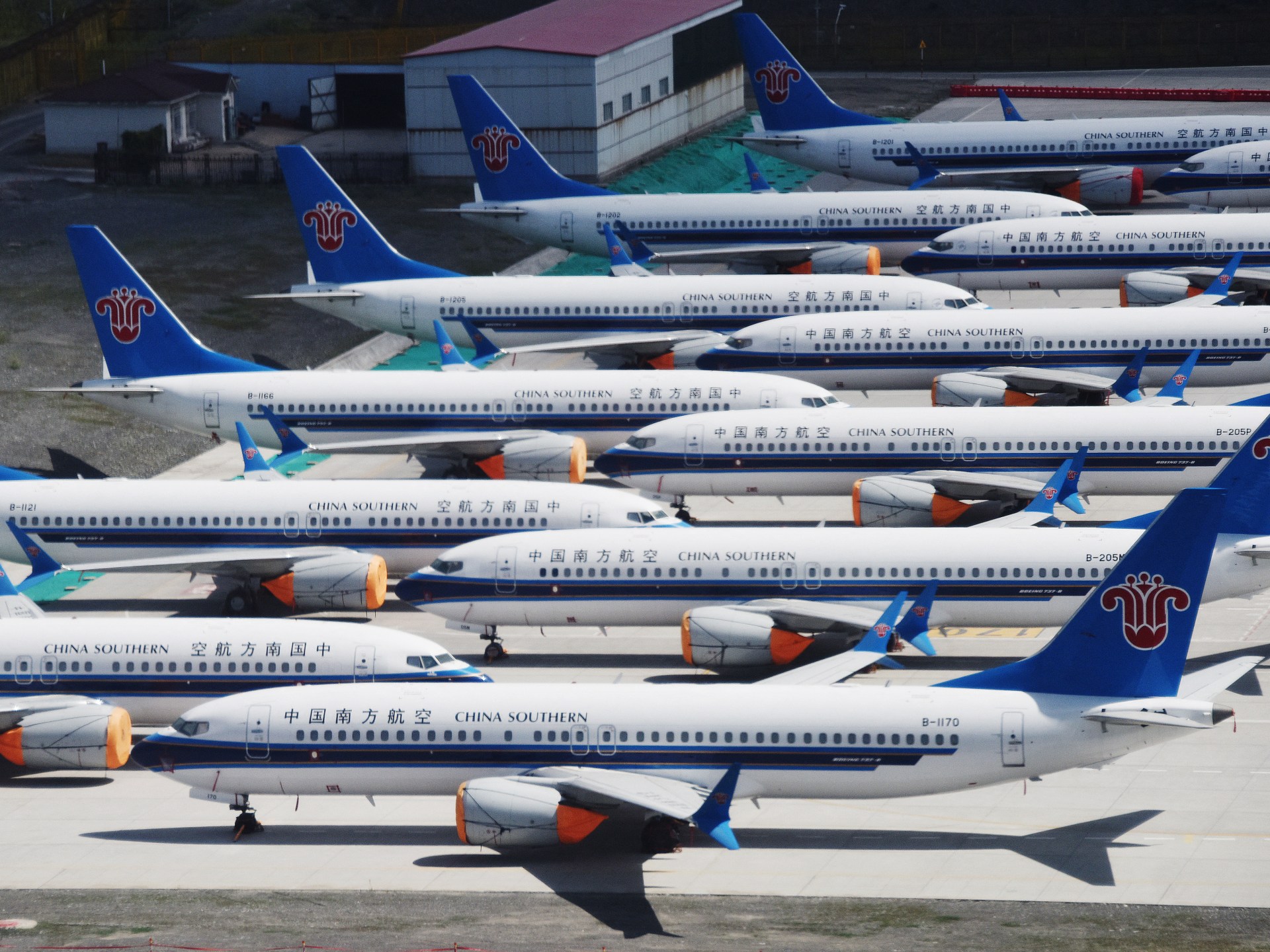An accident involving a door crashing into the fuselage during a commercial passenger flight added more complexity to Boeing's ongoing crisis with the 737 MAX models (French)
The challenges facing Boeing following the recent accident that occurred on an Alaska Airlines plane caused shock waves through the aviation industry.
The crash of a door into the plane's fuselage during a commercial passenger flight added another layer of complexity to Boeing's ongoing 737 MAX crisis, intensifying scrutiny of the company's manufacturing operations and raising questions about its ability to compete with arch-rival Airbus.
Airbus rises as Boeing falls
A report in the Financial Times sheds light on the reality of the civil aviation industry. While Airbus was flying high with the success of its A320 series, Boeing finds itself mired in a series of setbacks.
The Airbus A380, which was once a symbol of greatness and ambition according to the company's description, faced a commercial failure, which led to the closure of the Jean-Luc Lagardère center in Toulouse in 2021. However, this facility has now redesigned its operations, contributing to increasing its efficiency and overcoming... On manufacturing constraints, thus increasing orders for the A320 series.
The newspaper adds that, in stark contrast, the Boeing 737 Max series was marred by numerous accidents, as the 737 Max 8 crashes in 2018 and 2019 claimed the lives of 346 people, leading to it stopping flying for 20 months. Attention has now turned to the Max 9 after... The latest incident, leading to further investigations into Boeing's manufacturing and supply chain operations.
With the FAA approving some Max 9 planes to resume flights, Boeing's problems continue.
Pledges by Boeing leadership, including those from CEO Dave Calhoun, to enhance quality and engineering processes have failed, prompting the Federal Aviation Administration to freeze Boeing's plans to increase production of the MAX fleet.
It is expected that Boeing's fourth-quarter results will be announced on January 31, with great concern, at a time when the company has appointed a retired naval admiral to review its quality management systems.
The unstable balance between Boeing and Airbus
The newspaper points out that the old duopoly in the aviation industry between Boeing and Airbus is at a crossroads. While Airbus has dominated aircraft deliveries over the past five years, Boeing's missteps have led some industry experts to ponder whether a radical shift is taking place in the balance of power.
With Airbus holding a 62% market share in the narrow-body segment, the health of the aviation sector is expected to depend on the competitiveness of both Boeing and Airbus.
Michael O'Leary, CEO of Ryanair, stresses the need for strong competition not only for orders, but also for technological progress. He says, "It is very important that we have a strong Boeing and a strong Airbus," according to what the newspaper quoted him as saying.
Airbus's market share is 62% in the narrow-body aircraft sector (Getty)
But the Financial Times confirms that the risks are great, and Boeing’s struggle extends beyond its individual crisis, as it is spreading throughout the aviation supply chain, and affecting airline customers, noting that the urgent need for Boeing to recover what it lost has become clear, as it outperformed Airbus outsells Boeing by two to one in the narrow-body aircraft market.
New competitors on the horizon
The emergence of the Commercial Aircraft Corporation of China (COMAC) has introduced a wildcard in the aviation power game, according to the newspaper. The Chinese state-backed airline aims to challenge the duopoly between Boeing and Airbus, with its C919 making its inaugural flight in 2023.
While this represents an important milestone for China's ambitions, doubts remain about COMAC's ability to be a real competitor.
But COMAC's reliance on Western suppliers for critical components, coupled with the need for foreign regulatory approvals, highlights the challenges faced by new entrants, according to experts the newspaper spoke to.
Despite China's aspirations to claim a significant share of the global aviation market, COMAC's path remains uncertain.
Other companies are hovering in the field, such as the Brazilian company Embraer, which may expand and is the leader in the field of regional aircraft, in the civil aviation market.
However, the trajectory of Bombardier, a former Canadian industry champion, underscores the risks associated with challenging the duopoly between Boeing and Airbus.
Boeing's innovation dilemma
The newspaper estimates that Boeing is at a crossroads, facing increasing scrutiny and the need to embark on the road to recovery. Industry experts suggest that Boeing's salvation lies in the development of a new single-aisle aircraft. However, this proposal raises significant challenges, including financing such development and handling existing orders for the struggling MAX.
The Financial Times confirms that the development of the aviation scene depends on Boeing’s ability to recover, while long-term industry observers confirm that Boeing must respond quickly to remain a balanced force that can achieve a balance between the industry giants, Boeing and Airbus, which will shape the course of the aviation industry for years to come. .
As Boeing considers its next move, the call for innovation and competition is reverberating throughout the industry. While the duopoly remains intact for now, the huge shifts caused by Boeing's problems and the emergence of potential competitors underscore the dynamic nature of global aviation power dynamics.
The newspaper concludes by saying that the future of global aviation stands at a critical juncture, and whether Boeing is able to regain its position, or if new competitors emerge, the future of the industry is heading towards restructuring, and the only thing that is certain is that the skies are not as clear as they seemed before, and the turmoil it faces Boeing resonates through the entire fabric of the global aviation sector.
Source: Financial Times

